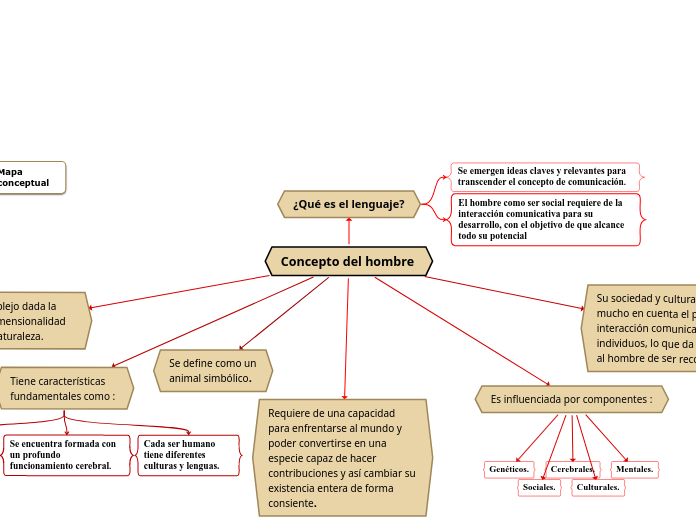Mapa conceptual
Concepto del hombre
To name your story, you have to think about the overall message and what you want your audience to understand from the story. Also, make it relevant and easy to remember.
Es complejo dada la multidimensionalidad de su naturaleza.
The ending of a story is essential. We all know that if the ending is weak, what happened before loses its importance. So make it unpredictable, but fair. A resolved ending answers all the questions and ties up any loose threads from the plot.
Requiere de una capacidad para enfrentarse al mundo y poder convertirse en una especie capaz de hacer contribuciones y así cambiar su existencia entera de forma consiente.
Se define como un animal simbólico.
Tiene características fundamentales como :
The middle of the story is where you add layers of complications that will lead to the end. Reveal more about the character's journey. Did their personality go through changes? How did they overcome the challenges? And as you build up the story’s central conflict, make it more personal to that character. Also, from the middle act, you have to lead into the final act.
Cada ser humano tiene diferentes culturas y lenguas.
There wouldn't be any tension and excitement in your story if there weren't any obstacles in your character's way.
Se encuentra formada con un profundo funcionamiento cerebral.
Ser una especie bípeda.
Each story has a main character and that character usually needs to solve a problem or challenge. The character's challenge is the one that creates tension throughout the story.
Su sociedad y cultura toman mucho en cuenta el producto de la interacción comunicativa entre los individuos, lo que da la posibilidad al hombre de ser reconocido.
Es influenciada por componentes :
Culturales.
Sociales.
Mentales.
Cerebrales.
Genéticos.
¿Qué es el lenguaje?
In the beginning of the story (or the exposition), you will need to introduce the setting and characters. You might also want to introduce the main conflict. This part of the story is important because it gives the reader necessary background information and maybe even a first insight into a character’s personality.
El hombre como ser social requiere de la interacción comunicativa para su desarrollo, con el objetivo de que alcance todo su potencial
The setting (time & place) of a story can change throughout the plot.
Se emergen ideas claves y relevantes para transcender el concepto de comunicación.
Characters are essential to a good story. Usually, the protagonist(s) is/are the most affected by the plot. Introduce a character by focusing on their actions, interests, and occupation, as the physical appearance doesn't make a difference in most cases.










